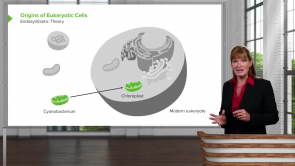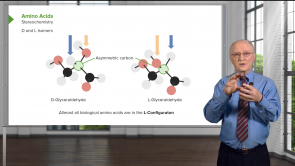Deoxyribonucleotide Synthesis and Ribonucleotide Reductase

About the Lecture
The lecture Deoxyribonucleotide Synthesis and Ribonucleotide Reductase by Kevin Ahern, PhD is from the course Purine and Pyrimidine Metabolism. It contains the following chapters:
- Deoxyribonucleotide Synthesis
- Ribonucleotide Reductase
- RNR Reaction Mechanism
Included Quiz Questions
Which of the following is true regarding deoxyribonucleotide de novo synthesis?
- It requires ribonucleotide reductase.
- It starts with ribonucleoside monophosphates.
- It produces dTTP from dCTP.
- Ribonucleotide reductase requires one water molecule to convert from its reduced form to an oxidized form.
- It requires the enzyme ribonucleotide hydroxylase.
Which of the following is true regarding ribonucleotide reductase (RNR)?
- It has allosteric sites on the large subunit.
- It has a small subunit called R1.
- The small subunit has three allosteric sites.
- The large subunit has three allosteric sites.
- The large subunit has a tyrosine which is important in the reaction mechanism.
Which of the following is true regarding the catalysis by ribonucleotide reductase (RNR)?
- It involves the transfer of electrons through sulfhydryls.
- It requires a phenylalanine radical.
- It involves the donation of electrons to the enzyme from the ribonucleotide.
- The reduced form of RNR has a hydroxyl radical that is important for the reaction mechanism.
- The reduction of sulfhydryl is necessary to generate the oxidized form of RNR.
Which of the following assists with the conversion of oxidized ribonucleotide reductase enzyme back into a reduced form?
- Reduced thioredoxin
- Oxidized thioredoxin
- Radicalized tyrosine
- Oxidized tyrosyl radicals
- Reduced tyrosyl radicals
These courses may be of interest to you
Customer reviews
5,0 of 5 stars
| 5 Stars |
|
5 |
| 4 Stars |
|
0 |
| 3 Stars |
|
0 |
| 2 Stars |
|
0 |
| 1 Star |
|
0 |






